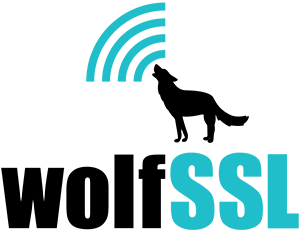We have been working within OpenEmbedded and the Yocto Project to develop an Open Source SSL/TLS layer designed for incorporating CyaSSL into custom Linux builds for embedded systems. meta-wolfssl contains three completed recipes including the CyaSSL library as well as the CTaoCrypt (wolfCrypt) test and benchmark executables. You can now test and send information quickly […]
Read MoreMore TagCategory: Uncategorized
CyaSSL and RakNet
Hi everyone, we’re curious if anyone is interested in using CyaSSL-based RakNet. RakNet is a high-performance network API designed for games or other high-performance network applications. It is intended to provide most all features modern games need, such as a master server, autopatcher, voice chat, and cross-platform capabilities. You can learn more at the following […]
Read MoreMore TagwolfSSL FIPS 140-2 Certification Status Update
wolfSSL will soon have FIPS 140-2 level one validation for the wolfCrypt crypto engine! We have entered the lab process and will be out of the lab as soon as August 15, 2014. Our application will then be submitted to NIST for final review. The FIPS certification will support a broad range of wolfSSL customers, […]
Read MoreMore TagwolfSSL Born in the USA!
We receive a lot of questions about the origins of the wolfSSL lightweight SSL library and wolfCrypt software packages. We get asked where they were developed, and by who? These questions usually come from US government agencies and their contractors. Simply stated, mes amis, wolfSSL and wolfCrypt were Born in the USA and written by […]
Read MoreMore TagwolfSSL Android SSL Client App
The wolfSSL Android Client is our first Android application that incorporates the CyaSSL lightweight SSL library together with the wolfSSL JNI library in order to test secure connections to servers across the Internet. With our Android SSL Client you can quickly test SSL, TLS, and DTLS connections whether they be located on a local network […]
Read MoreMore TagRFC 5487 in wolfSSL TLS Library
HI! We are implementing RFC 5487 in wolfSSL. If you are interested in using RFC 5487 with our product, then let us know what your requirement is, and then we can build it in. Feel free to contact us at facts@wolfssl.com or call us at +1 425 245 8247.
Read MoreMore TagwolfSSL Summer of Security
“Fear urged him to go back, but growth drove him on.” ? Jack London, White Fang The Internet of Things is a fast growing technology sector with new embedded devices introduced daily. With this increase in products which frequently require SSL/TLS and cryptography, wolfSSL has been experiencing continual growth and decided to bring in a […]
Read MoreMore TagTLS 1.3 on Github
Hi! We wanted to point out to our users that the TLS 1.3 working group has put their specification work up on Github at: https://github.com/tlswg/tls13-spec We are eager to implement TLS 1.3 as it gets closer to its final specification! We think this new protocol iteration will add a lot of improvement! As such, we`re […]
Read MoreMore TagIntro to PKCS #5: Password-Based Cryptography Specification
Our third post in our PKCS series, we will be looking at PKCS #5. PKCS #5 is the Password-Based Cryptography Specification and is currently defined by version 2.0 of the specification. It is defined in RFC 2898 http://tools.ietf.org/html/rfc2898. It applies a pseudorandom function, such as a cryptographic hash, cipher, or HMAC to the input password or passphrase […]
Read MoreMore TagVideo Tutorial: Basic Compilation and Installation of CyaSSL
If you are looking for a quick and easy guide on compiling, installing and using CyaSSL, then we have some good news: In order to make it even easier to understand and install CyaSSL, we recently created a video tutorial to help get you started. The video will walk you through the downloading and installing […]
Read MoreMore Tag
